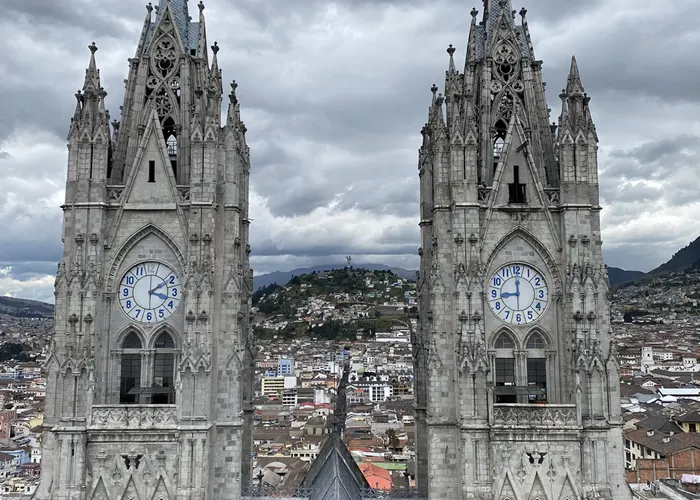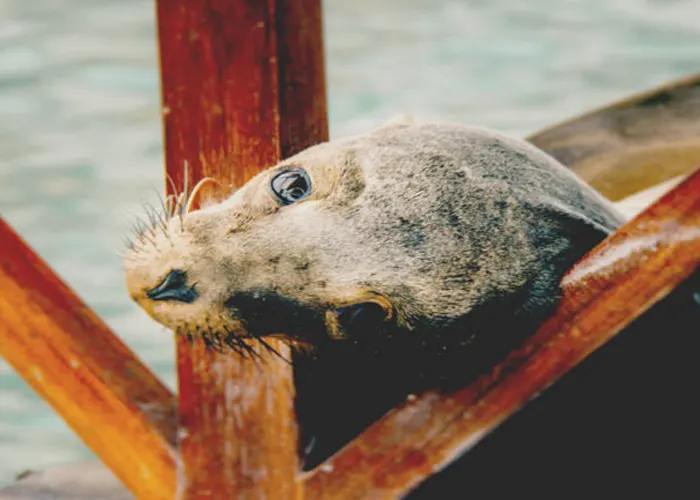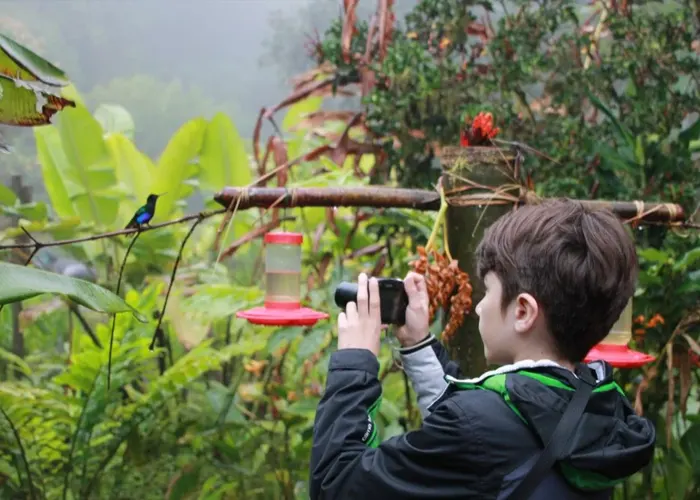Travel experience: Ecuador and Galapagos round trip part 3
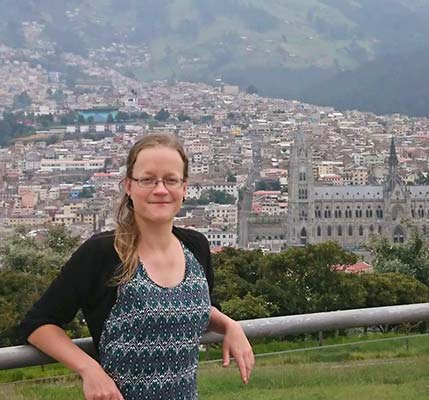
Maria S.
Experience report Galapagos cruise with the yacht Solaris
Galapagos Islands Isabela and Fernandina
We arrived safely on the ship that will be our home for a week. The first iguanas met us at the airport. The first excursion took us to Bachas on the island of Santa Cruz, where we saw iguanas, pelicans, red cliff crabs and flamingos. I didn’t get my first dip in the sea because I was chatting to Alexis, the tour guide. The next opportunity will surely come… Now we’re sitting on deck, enjoying the sunset, chatting with the other passengers and looking forward to dinner.
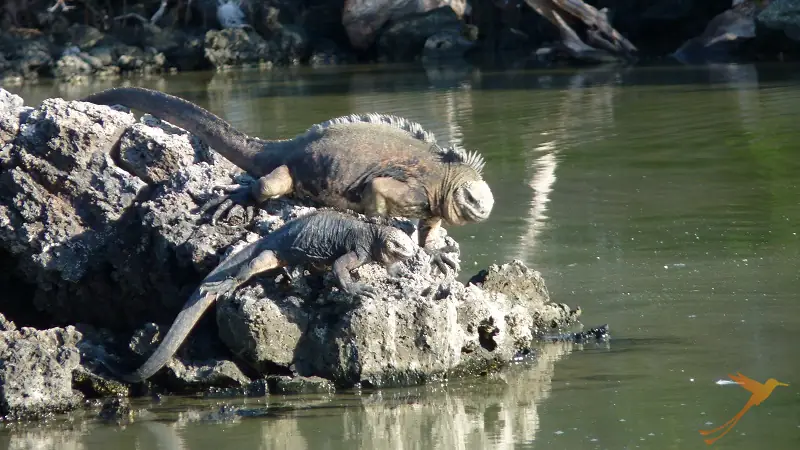
We drove to the island of Isabela at night, which was quite swinging, but after a while it felt like being in a cradle. When we opened the door in the morning, a wonderful sunrise panorama awaited us. We went on our first excursion before breakfast. We walked on lava rock to a tidal channel where a reef shark was sleeping and a seal was swimming. On the way, we encountered hordes of black iguanas warming up on the rocks after the “cool” night. We also saw a Canadian heron, which is not really easy to spot at this time of day. We were able to see an iguana up close. However, it was already dead. A great first excursion before breakfast. We had one more shore excursion today after snorkeling in the meantime: the giant tortoise breeding station. It’s amazing what efforts are being made to stabilize the population. In fact, the success is probably so great that the program can be discontinued in 2030. Enormous. On our way back through the mangrove forests, we were surprised by the rain and got soaked to the skin. But it didn’t really bother anyone. In the surprisingly large town, we treated ourselves to a fresh coconut with sugar cane liquor before heading back to the boat.
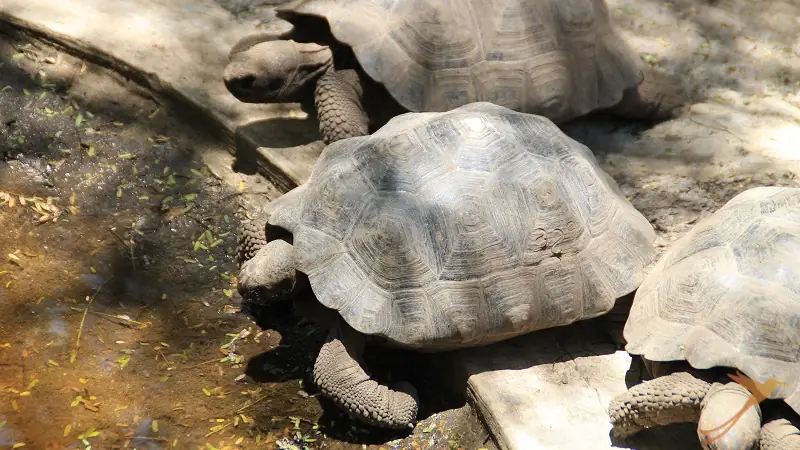
Isabela: Moreno Point
The first excursion today took us to Moreno Point, from where we could see all the volcanoes on the island. They are all still active, but due to their shape and several small pressure equalization points, any eruptions are rather moderate. If you remember that without pressure equalization, lava shoots out explosively and can have a flow rate of more than 9.2 s per 100 m….there is no escape! When the lava cooled, small lakes formed in which for example giant tortoises chill out. As there are tides here, the lakes regularly fill up and pave the way into the sea. Sometimes fish eggs are washed out of the sea into these lakes and the hatched fish then make themselves at home there. It is also impressive how even dead lava can turn green again. Cacti grow there, and mangrove seeds have settled on the edges of the lake and formed a green belt. After this short hike, we went deep sea snorkeling for the first time, where we saw giant tortoises, seals and lots of wonderful fish. It’s impressive to be in the middle of a school of millions of sardines, and they don’t mind at all. After lunch, we went snorkeling once again, where I was able to observe even more giant tortoises grazing on algae. There were lots of colorful starfish and sea urchins, and a cormorant dived into the water next to me. After that, we went straight on a boat tour. We sailed along the coast, which was great in itself. But the animals were even more amazing: breeding pelicans, courting penguins, diving cormorants, wonderful starfish. But our favorite was the blue footed boobies.
Fernandina
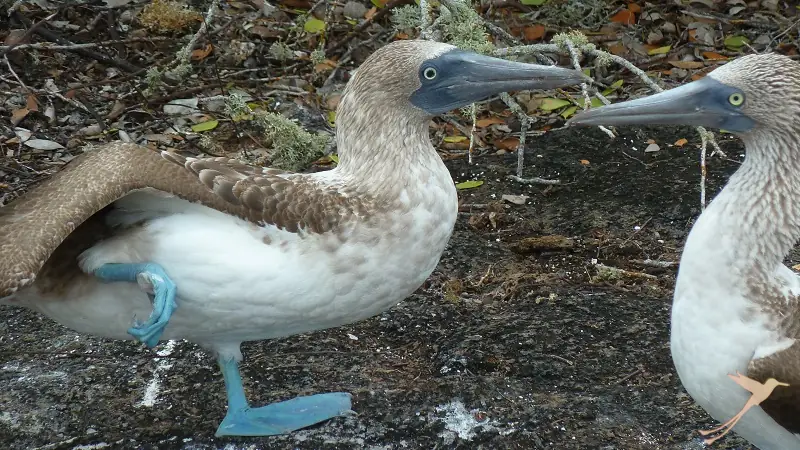
Fernandina is the youngest Galapagos Island: a volcano, lots of lava rock and small beaches of powdered shells as well as lava cacti and mangroves. And animals everywhere. We have to be careful not to step on them. Many iguanas dig their holes in the beaches to lay their eggs and defend them vigorously against competitors who make it easy for themselves and want to take possession of a hole The first deep sea snorkeling took us to rocks where hundreds of iguanas live. And they sometimes dart into the water. They are actually quite peaceful creatures, although they look scary. One of my fellow divers shouted something about “shark” and a shark swam underneath me. And it wasn’t a baby shark!!!! Once again there were beautiful fish to see. Finally, in front of me was an algae-covered plateau with four giant turtles on it. They were so close to me that I could almost touch them. It was an incredible feeling. And when they lift their heads out of the water next to you and I just happen to have my head up too: indescribable!!! After another great snorkeling session among penguins and cormorants, we head back along the coast by boat. We see a hammerhead shark (at least a few…), absolutely playful penguins and seals, a sand seal, cormorants and lots of blue footed boobies. There are also lots of small birds mingling among the animals. In the evening we cross the equator. We are allowed onto the bridge together, where the 0° latitude is displayed. Then Neptune checks whether we are worthy of entering his realm. And finally, a magnificent sunset awaits us.
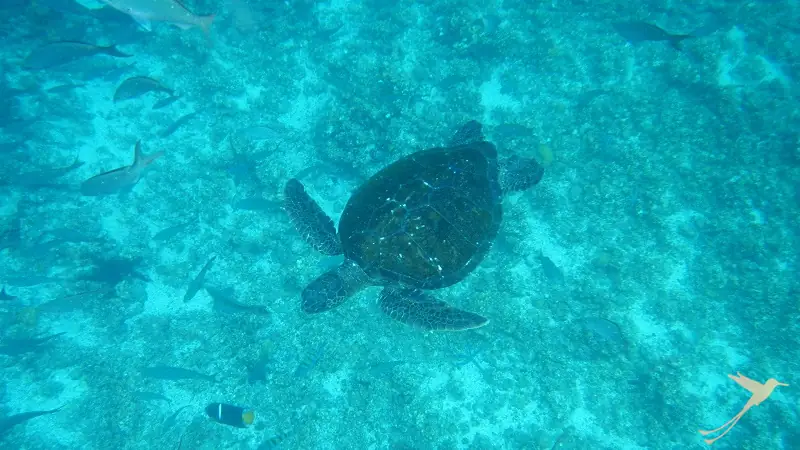
Santiago, Rabida, Charles Darwin Research Center, Yacht Solaris
Santiago
We sailed along the coast of Santiago in small dinghies and mainly saw seals. We also saw a huge manta ray in the water. But the rock formations were far more exciting. After a short break, we went deep sea snorkeling, where I saw beautiful fish and a small manta ray, a so-called golden cownose ray. We had a delicious ceviche for lunch… Wet Landing: we were taken by dinghy to the black beach and went on a fascinating hike through impressive rock formations. Our highlight was three seals that made their way right past us to find a nice spot on a rock where the little one could drink with its mother. After our hike, we went snorkeling and saw a shark, among other things. In the evening, the sharks swam around our boat….
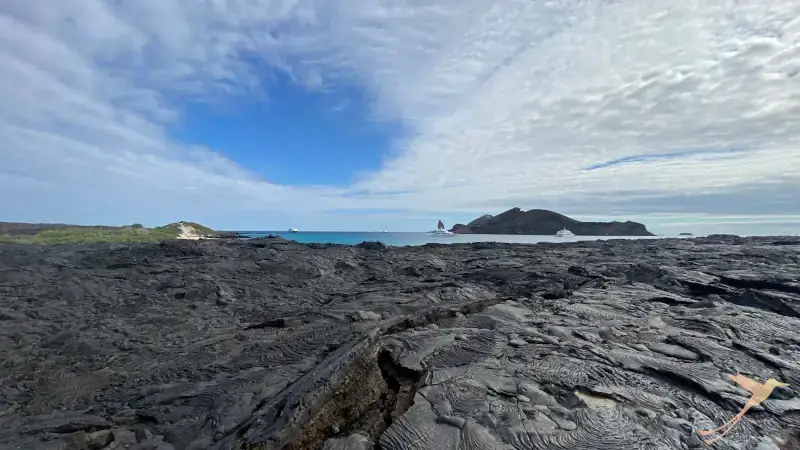
Rabida
A completely different island on the Galapagos: Rabida. Here, volcanic eruptions have brought iron-containing components to the island. That’s why the rock is red and – quite uniquely – so is the beach. We took a short hike across the beach to a lagoon where flamingos had come to breed for the first time in 25 years. Pelicans, seals and lizards frolicked on the beach. We went fairly shallow into the water for off-the-beach snorkeling, and the first Mexican hogfish could already be seen there, swimming between our legs and even touching us. Further out we saw a school of surgeonfish and a flatfish. I then came across a huge school of small fish that looked like a dark, menacing ball. There must have been tens of thousands of them. And then I encountered an animal that looked like a snake, but was probably something sturgeon-like. Anyway, I swam back to my friends, the Mexican hogfish. We reach Chinese Hat in the afternoon and go for a short walk along the great little beach. We see lots of baby seals and hope very much that their moms will find them again and take care of them. One last deep water snorkeling session with puffer fish, huge parrotfish and really big starfish. A beautiful last snorkeling trip.
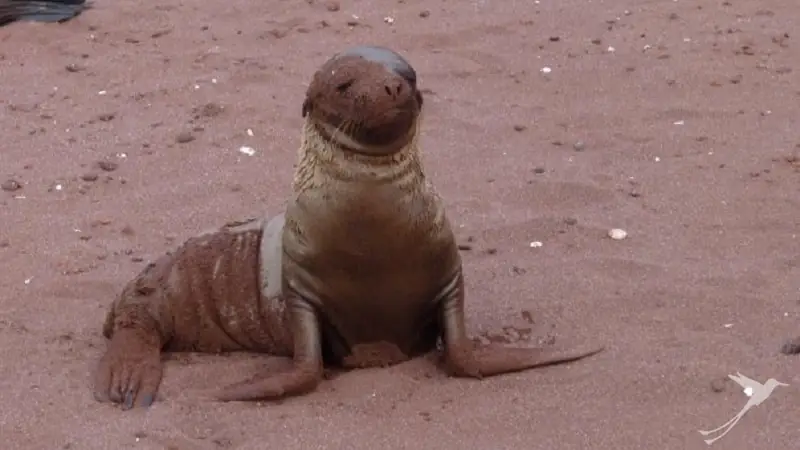
Charles Darwin Research Center
Last day, breakfast at 5.15 am. The last point on the program is the Darwin Research Center, where we learn a lot about Darwin’s work. We hear how children are sensitized to the protection of flora and fauna from a very early age. As a small highlight, we see a turtle breeding station and also a few adult animals. A nice finale.
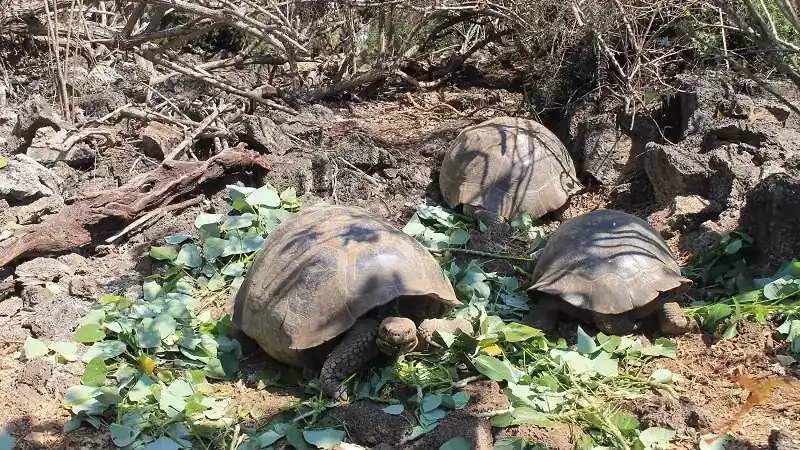
Solaris Yacht:
The yacht was really well equipped, we had enough space in the cabin. The beds were very comfortable, the air conditioning surprisingly quiet, the staff extremely friendly and attentive. All the rooms were very clean. Once we had a small problem with the toilet, which was repaired immediately. The food was great. There were lots of fresh salads, vegetables and of course fish. The buffets were very appealing, but not overloaded. In school grades: Facilities 2, accommodation, cleanliness, staff and food 1. The only small disadvantage was that the engine was relatively loud, but that is in the nature of things and therefore ok. However, we were a little surprised by the tipping recommendation. We had checked the recommendations on the Internet, but the actual recommendation (35 dollars per day and passenger for the crew and 10 dollars per day and passenger for the guide) was much higher than we had expected. It would have been good to be advised of this when preparing the trip.
Newsletter Signup Form
Recent Posts
- Yasuni National Park – 4 Days at Sani Lodge. Experience Report Part 2 April 18, 2025
- Yasuni National Park – 4 Days at Sani Lodge. Experience Report Part 1 April 4, 2025
- Travel Tip Peru – Trujillo March 21, 2025
- Galapagos Travel: Everything You Need to Know for Your Trip March 7, 2025
- Travel Tip Peru – Machu Picchu February 21, 2025

